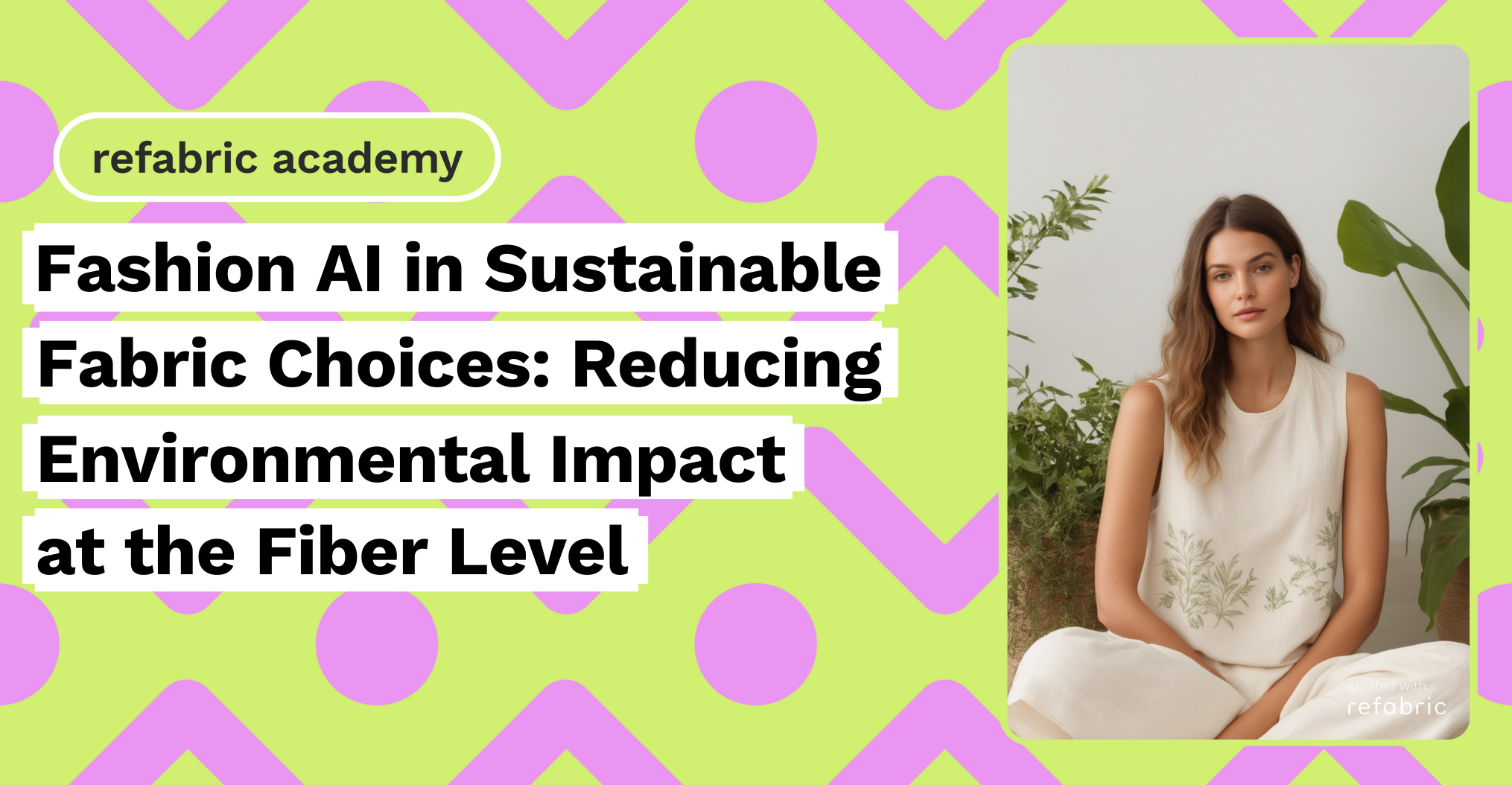Suggesting Eco-Friendly Fabric Alternatives
One of the primary ways fashion AI is revolutionizing sustainable fabric selection is through its ability to recommend eco-friendly alternatives to traditional textiles. The AI systems are trained on vast databases of fabrics, which include detailed information on the environmental impact of each fiber, such as water usage, carbon footprint, biodegradability, and energy consumption during production. This wealth of data empowers fashion AI to identify fabrics that align with a brand’s sustainability goals while minimizing harm to the environment.
For example, if a brand typically relies on polyester—a material with a high environmental cost due to its synthetic origins and non-biodegradable nature—AI can suggest alternatives like recycled polyester or organic cotton. Brands can also be directed toward more innovative materials, such as Tencel, a fiber derived from sustainably sourced wood pulp, or Piñatex, an alternative derived from pineapple leaves. By analyzing a brand’s existing materials and design preferences, AI in fashion design can offer fabric substitutions that are both eco-conscious and visually appealing.
Fashion AI not only provides immediate access to these alternatives but also integrates into design workflows, allowing brands to experiment with new fabrics in a virtual environment. This virtual testing phase is essential, as it reduces the need for physical fabric samples, further cutting down on waste and emissions associated with shipping.
Predicting the Lifespan of Materials with Fashion AI
A key component of sustainability is durability—how long a garment can withstand wear and tear before it needs replacement. Predicting the lifespan of materials allows brands to make smarter fabric choices and helps consumers make more sustainable purchasing decisions. Fashion AI has the capability to evaluate fabric durability by assessing factors such as fiber composition, weave density, and even stitching techniques. Through machine learning algorithms, AI in fashion design can analyze a fabric’s characteristics and predict how long it will last under certain conditions.
For example, if a brand wants to create a collection of durable, long-lasting basics, fashion AI can help determine which fabrics are best suited for that purpose. By predicting the longevity of a material, AI aids brands in creating clothing that endures, reducing the fast-fashion cycle and encouraging a more responsible consumption model. Additionally, brands can use this data to provide consumers with transparency about garment durability, fostering a culture of informed choices and long-term value in fashion purchases.
Guiding Sustainable Textile Innovation
Beyond fabric selection, fashion AI is playing a pivotal role in the innovation of new textiles that are inherently more sustainable. As researchers and scientists continue to explore sustainable materials, AI in fashion design is instrumental in analyzing these developments and guiding brands toward materials with reduced environmental impact. Fashion AI is also able to predict how these materials will behave in the real world, helping brands test and refine new fibers before investing in large-scale production.
AI’s role in textile innovation extends to recycling initiatives as well. For example, by analyzing fabric compositions, AI can identify how certain textiles can be repurposed or broken down into reusable fibers, supporting a circular economy. Brands committed to reducing waste and embracing a zero-waste philosophy can leverage AI to make these decisions at the fiber level, creating clothing lines designed for recyclability from the outset.
The Future of Sustainable Fashion with AI
As the fashion industry strives to address its environmental footprint, fashion AI offers a forward-looking solution that empowers brands to make meaningful changes at the foundational fabric level. From suggesting eco-friendly materials to predicting the longevity of textiles and guiding sustainable innovation, AI enables brands to design with purpose and responsibility. These advancements not only benefit the environment but also align with consumer demand for greater transparency and sustainability in fashion.
In a world where responsible fashion is increasingly essential, AI-driven sustainable fabric choices provide the tools and insights that brands need to meet both ecological and ethical expectations. By integrating AI into the design and production process, the industry can create garments that are not only stylish but also crafted with the planet in mind. As fashion AI continues to evolve, its potential to revolutionize sustainable fabric choices promises a future where environmental impact is minimized at every fiber, leading to a truly sustainable fashion ecosystem.
